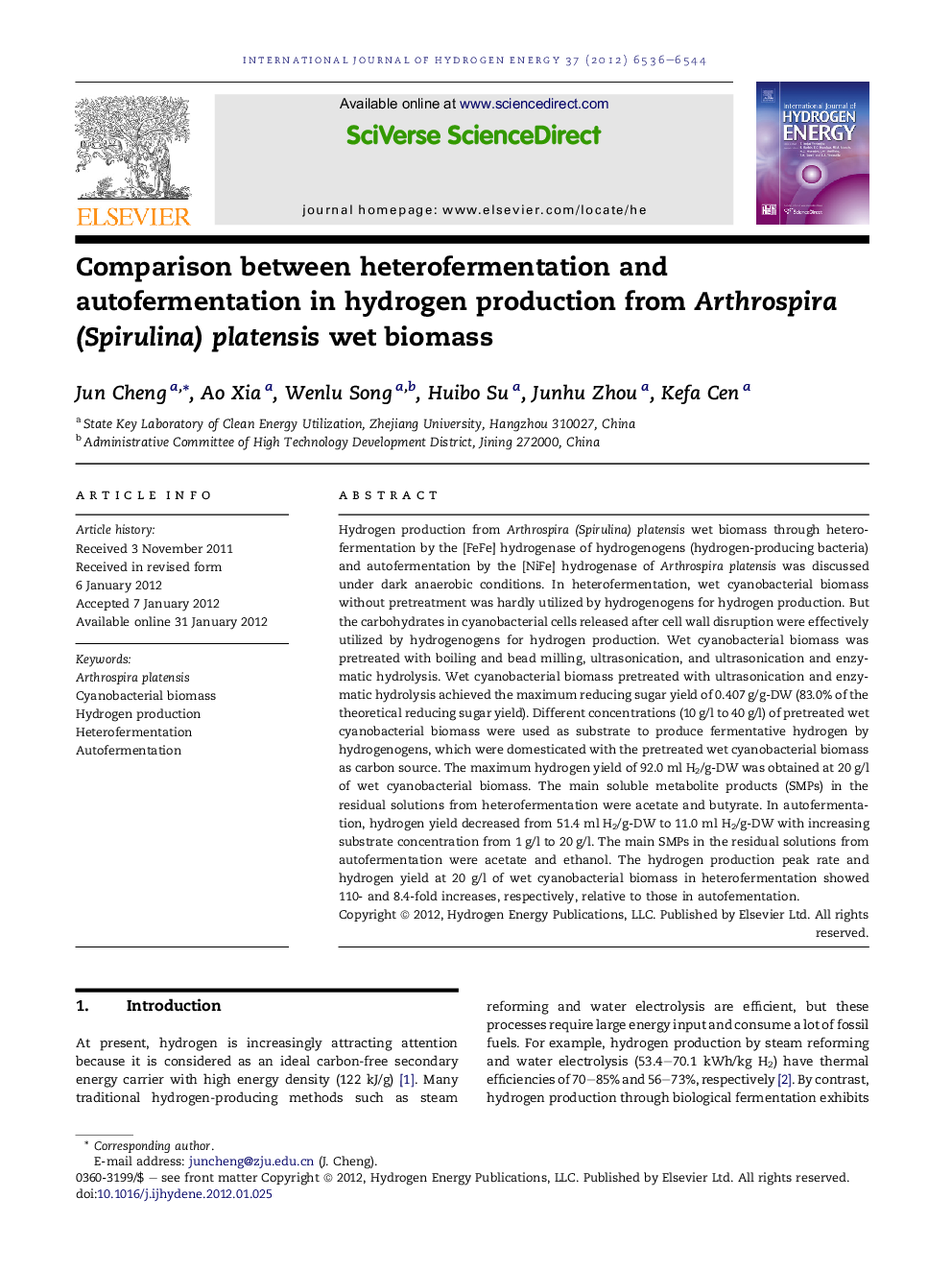| Article ID | Journal | Published Year | Pages | File Type |
|---|---|---|---|---|
| 1276593 | International Journal of Hydrogen Energy | 2012 | 9 Pages |
Hydrogen production from Arthrospira (Spirulina) platensis wet biomass through heterofermentation by the [FeFe] hydrogenase of hydrogenogens (hydrogen-producing bacteria) and autofermentation by the [NiFe] hydrogenase of Arthrospira platensis was discussed under dark anaerobic conditions. In heterofermentation, wet cyanobacterial biomass without pretreatment was hardly utilized by hydrogenogens for hydrogen production. But the carbohydrates in cyanobacterial cells released after cell wall disruption were effectively utilized by hydrogenogens for hydrogen production. Wet cyanobacterial biomass was pretreated with boiling and bead milling, ultrasonication, and ultrasonication and enzymatic hydrolysis. Wet cyanobacterial biomass pretreated with ultrasonication and enzymatic hydrolysis achieved the maximum reducing sugar yield of 0.407 g/g-DW (83.0% of the theoretical reducing sugar yield). Different concentrations (10 g/l to 40 g/l) of pretreated wet cyanobacterial biomass were used as substrate to produce fermentative hydrogen by hydrogenogens, which were domesticated with the pretreated wet cyanobacterial biomass as carbon source. The maximum hydrogen yield of 92.0 ml H2/g-DW was obtained at 20 g/l of wet cyanobacterial biomass. The main soluble metabolite products (SMPs) in the residual solutions from heterofermentation were acetate and butyrate. In autofermentation, hydrogen yield decreased from 51.4 ml H2/g-DW to 11.0 ml H2/g-DW with increasing substrate concentration from 1 g/l to 20 g/l. The main SMPs in the residual solutions from autofermentation were acetate and ethanol. The hydrogen production peak rate and hydrogen yield at 20 g/l of wet cyanobacterial biomass in heterofermentation showed 110- and 8.4-fold increases, respectively, relative to those in autofementation.
► Wet cyanobacterium is ultrasonically and enzymatically hydrolyzed for reducing sugar. ► Pretreated biomass is fermented by domesticated hydrogenogens to improve H2 yield. ► Heterofermentation gives much higher H2 yield and peak rate than autofermentation.
